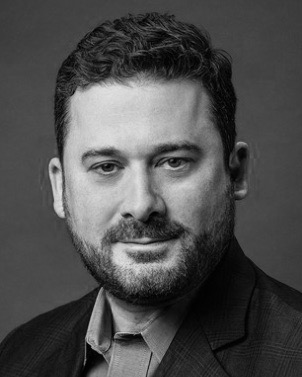The world was shocked when Russian special operations forces invaded Crimea with advanced technology, drastically improved operations, and with so much operational security that even agencies in the U.S. intelligence community didn’t see it coming. In Washington, government and congressional leaders are wondering how the Russian special operations forces got so good, so fast, without anyone noticing. Some are wondering how much help Russia had from the West.

In 2011, for example, the German defense contractor Rheinmetall signed a $140 million contract to build a combat simulation training center in Mulino, in southwest Russia, that would train 30,000 Russian combat troops per year. While the facility wasn't officially scheduled to be completed until later this year, U.S. officials believe that Germany has been training Russian forces for years.
Rheinmetall defended the project even after the invasion of Crimea, up until the German government finally shut it down late last month. But many tracking the issue within the U.S. government were not happy with Germany's handling of the Russian contract, and worry that some of the training may have gone to the kind of special operations forces now operating in and around Ukraine.
“It’s unfortunate that German companies were directly supporting and training Russia’s military even during the attacks against Ukraine,” one senior Senate aide told The Daily Beast. “The U.S. government should call on our NATO allies to suspend all military connections with Russia at this point, until the Russians leave Ukraine, including Crimea.”
According to the Congressional Research Service, Rheinmetall’s partner in the deal was the Russian state-owned Oboronservis (“Defense Service”) firm. The training center, modeled after one used by the German Bundeswehr, was to be “the most advanced system of its kind worldwide.” Reinmetall saw the contract as a precursor to several more projects “in light of the plans to modernize the equipment of the Russian armed forces.”
U.S. officials, now looking back, are privately expressing anger and frustration about the German work with the Russian military. While definitive proof is hard to come by, these officials look at the radical upgrade of Moscow’s forces–especially its special operations forces–experienced since they last saw major action in 2008's invasion of Georgia. The U.S. officials believe that some of the German training over the last few years was given to the GRU Spetsnaz, the special operations forces that moved unmarked into Crimea and who can now be found stirring up trouble in eastern Ukraine.
“People are pissed,” one U.S. intelligence official told The Daily Beast. “The chatter inside the Pentagon is that the training they were providing was going to Spetznaz.”
Rheinmetall did not respond to a request for comment.
Russia maintains close economic ties with many NATO states–especially Germany. By some estimates, the country exported nearly $50 billion in goods to Russia in 2013. Tens, if not hundreds, of thousands of German jobs depend on Russian trade.
The armed forces of NATO members have also been working with their counterparts in the Russian military, on and off, for years. Russia has held joint military exercises with both Germany and the U.S., for example. America has bought Russian helicopters to use in Afghanistan. And Moscow allows NATO equipment to pass through Russian territory as the gear comes into and out of the war zone.
To the Congressional Research Service, “Rheinmetall’s construction of an army training center could be viewed in the context of the broader bilateral defense cooperation between Germany and Russia,” the service writes in its report. “The German… government’s approval of the contract to construct a training center also appears to be in line with long-standing German policy to promote military training and joint exercises with partner countries.”
But some on Capitol Hill see the Rheimetall contract as only one example of the folly of several NATO countries that rushed to sign lucrative defense contracts with Russia after President Obama declared a new “reset” policy with the Russian Federation. Lawmakers have tried to halt the French sale of the Mistral, an amphibious warship, to the Russian Navy. Some are also unhappy about the Italian sale of Lynx armored personnel carriers to Russia.
A Senate aide said that one of Rheinmetall’s contributions was to help the Russian army and GRU Spetznaz upgrade their gear. Reports show that the Russian military units both inside Ukraine and amassed on its eastern border are sporting brand new communications equipment, body armor, personal weapons, and ammunition. Taken together, it gives them a huge tactical advantage over the beleaguered Ukrainian armed forces.
Top defense officials are now acknowledging that Russia’s military has been revolutionized in recent years. This month, Vice Admiral Frank Pandolfe, the director for strategic plans and policy for the military’s joint chiefs of staff, told Congress in open testimony that in recent years Russia has created regional commands that “coordinate and synchronize planning, joint service integration, force movement, intelligence support, and the tactical employment of units” in what he deemed “snap exercises,” or military training missions that can be ordered at a moment’s notice.
In the testimony, Pandolfe also said Russia has placed greater emphasis on the use of Special Operations Forces as well as information and cyber warfare. Experts said that Russian military doctrine was dramatically updated in the past few years and clearly set out Russia’s plans for modernization and a focus on highly trained rapid reaction special forces. But in the West, the papers were not well read, much less understood.
The Russians also changed their doctrine to reflect that they viewed the threat as not coming from a conventional war, but from the need to protect Russian populations in unstable states facing what they deemed to be Western aggression.
“This wasn’t just about implementing lessons learned from [the 2008 invasion of] Georgia, it was about giving them a basis for a different kind of operations,” said Fiona Hill, a former top intelligence official on Russia, now with the Brookings Institution. “We should have been paying more attention to this. There have been these signals for a long time, but we have been misreading them.”
Western and NATO countries believed they could tie Russia into greater military cooperation through engagement, but now have realized that Russian was probably never really interested in that. The Russian military is now organized to respond to conflicts caused by such things as popular revolutions, political crises, and domestic insurgencies.
“Everyone was looking for a way to cooperate with the Russian military and rushed to find ways to do it, including us,” said Hill. “Whatever we do now, we have to be mindful that the Russians have been preparing for something else.”
Andranik Migranyan, a past member of Russia’s Presidential Council and currently an adviser to the Vladimir Putin administration, told reporters that ever since the Georgia war, Russia has been spending to radically upgrade its military, but that the West has only itself to blame for not following along.
“We have new armament, new army, new training,” he said. “It’s very strange you are not following what’s happening.”






